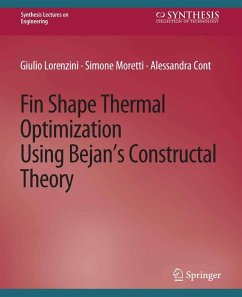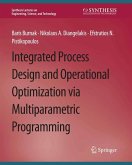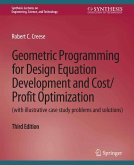The book contains research results obtained by applying Bejan's Constructal Theory to the study and therefore the optimization of fins, focusing on T-shaped and Y-shaped ones. Heat transfer from finned surfaces is an example of combined heat transfer natural or forced convection on the external parts of the fin, and conducting along the fin. Fin's heat exchange is rather complex, because of variation of both temperature along the fin and convective heat transfer coefficient. Furthermore possible presence of more fins invested by the same fluid flow has to be considered. Classical fin theory tried to reduce the coupled heat transfer problem to a one-dimensional problem by defining an average temperature of the fin and writing equations using this parameter. However, it was shown that this approach cannot be used because of the effects of two-dimensional heat transfer, especially in the presence of short fins. CFD codes offer the possibility to consider bi-dimensional (and more generally, three-dimensional) effects and then a more real approach to the physic phenomena of finned surface's heat exchange. A commercial CFD code was used to analyse the case of heat exchange in presence of T-shaped fins, following an approach suggested by Bejan's Constructal Theory. The comparative results showed a significant agreement with previous research taken as a reference, and this result allows for the application of this approach to a wider range of systems. T-shaped optimized fin geometry is the starting point for further research. Starting from the optimal results (T-shape optimized fins), we show the trend of the assessment parameter (the dimensionless conductance) in function of the angle a between the two horizontal arms of the fin. A value for a, 90° < a < 180° capable of a higher value of the dimensionless conductance, has not been found. The thermal efficiency showed a significant increase of this parameter, especially for values of a smaller than 100°. Thus, a new definition of optimisation is achieved by introducing the fundamental ""space factor."" The present work unifies the ""classic"" definitions of optimisation and efficiency in a new general performance criterion, opening a new perspective on multi-fin systems. The last chapter deals with a brief overview on Bejan's Constructal Theory. It explains either tree-shape natural flows or other geometric form in nature and engineering, applying the principle of performance maximization. The Constructal principle also recognizes that a new good form comes to another previous good form which serve the same objective and have the same constraints. Changes in configuration are dynamic, thus a time arrow is then associated to the evolution in system's configuration. Table of Contents: General Introduction / General Overview on Heat Transfer / Conservation Equations / Dimensionless group / Units and conversion factors / Overview of heat transfer on extended surfaces / State of the art in the T-Shaped Fins / Thermal exchange basis / T-Shaped fins / Y-Shaped fins / Modular systems of Y-Shaped fins / Heat removal vs Pressure drops / Conclusions
Dieser Download kann aus rechtlichen Gründen nur mit Rechnungsadresse in A, B, BG, CY, CZ, D, DK, EW, E, FIN, F, GR, HR, H, IRL, I, LT, L, LR, M, NL, PL, P, R, S, SLO, SK ausgeliefert werden.









